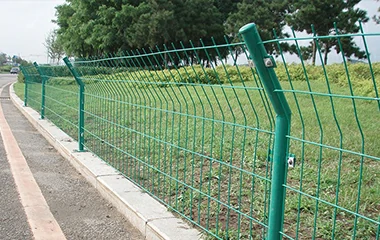 TEL:
+86-13102802206
TEL:
+86-13102802206
 Email:
fencenetting@china.com
Email:
fencenetting@china.com
 Language
Language
 TEL:
+86-13102802206
TEL:
+86-13102802206
 Email:
fencenetting@china.com
Email:
fencenetting@china.com
 Language
Language


The Dilemma of Barbed Wire on the Inside of Fences
Barbed wire is often associated with security, confinement, and, in some contexts, hostility. Its usage extends across various landscapes, from agricultural fields to prisons. However, the placement of barbed wire, particularly on the inside of a fence, raises significant questions about intent, safety, and societal implications.
The Dilemma of Barbed Wire on the Inside of Fences
However, this measure can also send a troubling message. It reflects a societal mindset that prioritizes defense over accessibility, fostering an air of distrust among neighbors and communities. When people feel they must take extreme measures, like installing barbed wire, it can create divisions and a sense of isolation rather than security. Neighbors may start to see each other as potential threats rather than allies in communal safety, which can erode the very fabric of community life.

Furthermore, the use of inward-facing barbed wire raises legitimate concerns over safety. While it may deter outsiders, it poses a risk to those within the confines of the fence. In emergency situations—fires, medical emergencies, or natural disasters—escape routes are vital. Barbed wire can complicate or prevent a swift exit, putting lives at risk. This contradiction highlights a critical point the very measures intended to ensure safety may inadvertently endanger those they are meant to protect.
Moreover, the presence of barbed wire can contribute to an unwelcoming and uninviting atmosphere. In public spaces and parks, fencing with barbed wire can deter legitimate users who may feel dissuaded from entering because of the harsh appearance. It invokes a sense of fear rather than comfort, driving individuals away from spaces that should ideally promote community engagement and interaction.
In considering the implications of barbed wire on the inside of a fence, we must weigh the balance between security and community. While protective measures are necessary, solutions that foster a sense of belonging and safety should be prioritized. Alternatives like transparent fencing, community watch programs, or even landscaping can create secure yet inviting environments.
In conclusion, while the intention behind placing barbed wire on the inside of fences often revolves around security, the broader implications touch upon societal well-being, safety, and community dynamics. As we navigate the complex relationship between personal security and community spirit, it is crucial to seek solutions that promote both safety and togetherness. Society must strive for a balance that protects individuals while fostering a sense of community and trust among its members.